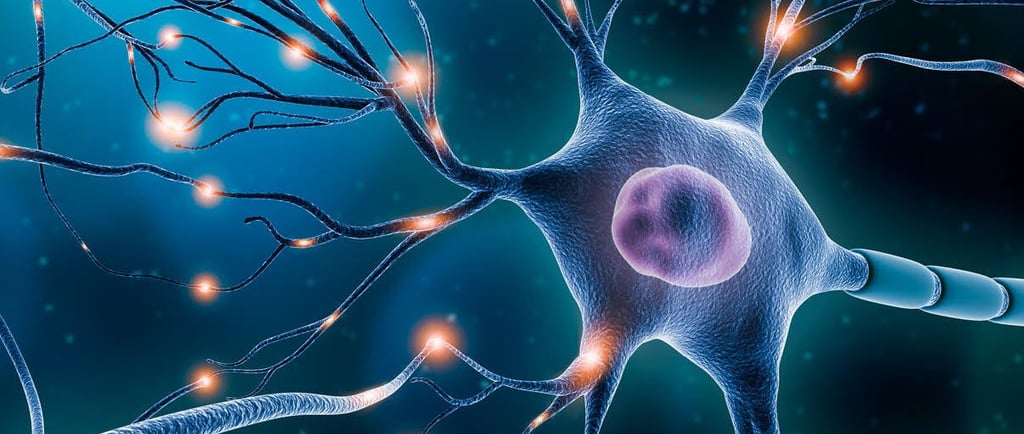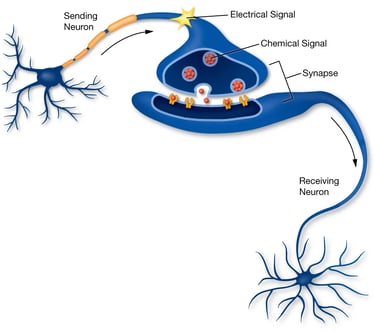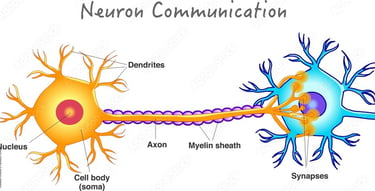
The Developing Brain: Neurons
2.2.1. An exploration into the tiniest part of the brain: the neuron and how important this tiny cell is in brain development. Showing that every single moment matters in development and that the life of the child begins way before they are born
ISSUE 2
VJ Tlakula
6/9/20254 min read


The Humble Neuron
The process of development of the young brain is a fascinating one. It is complex, yet designed to work in an organised an ordered way. When I think of the complexities of the brain, I have to wonder where it all starts and how it gets to its final product. This piece demonstrates how every single day, every single stage counts in the development of the baby's brain. It illustrates the miracle of development. Through the timely development and interconnection of multiple systems, everything is designed to function efficiently. Through taking us to one of the core building blocks of the system (superseded only by the gene), I want us to begin to explore the very basics of brain development. The what, the how, the when, and the where can all be explained by the genetic code (discussed in Part 4), and the humble neuron...
How Neurons Work
If you were to zoom in as close as you possibly could to the smallest visible part of the brain, you would land up at the neuron. In part 1 we touched on how the brain contains billions of neurons. And each of these neurons has thousands of connections with other neurons. Neurons are quite literally the both the building blocks of, and the workers in, the brain. They are the cells (tissue) which both form up the literal brain tissue and send messages through connecting with each other in the brain. They also exist in some of the other systems of the body.
Every neuron is made up of three main parts: a soma (the body of the neuron which carries its central genetic make-up information), the dendrites (which receive information from neurons surrounding it, and the axons (which send information to the neurons surrounding it). Within this structure we see that each individual neuron is designed with a purpose (held in its soma) which determines which job it will do and what signals it will respond to. It causes the brain to function by sending messages from axons to dendrites and down the neuron body to the next axon and so on. Neurons send messages by receiving a message from one neuron, sending the message down its “body” and then sending the message to the next receiving neuron.
Neurons come in different shapes and sizes and are all responsible for different activities. Whether it's making up the group of cells which will form a specific area of a lobe (e.g the primary association area of the occipital lobe) or being specialised to send signals about the texture of something we've touched or respond to our environment in some way. They are extremely diverse. Some are responsible for directing brain functions like thinking, understanding, speaking, others for sending automatic signals to get the body to respond in certain ways.
They are also responsible for all communication within the brain by getting different parts of the brain to communicate with each other through electrochemical signals. When one neuron fires, it can change the behaviour of those surrounding it. Neurons will only communicate with their closes neighbours (+/- 10000 others). This is how it gets the brain to perform tasks. And because the brain is the control centre of the entire body, these little guys play one of the biggest roles in the functioning of the entire body.
These nerve electrochemical messages that the neurons are sending are called neurotransmitters. A neurotransmitter is a chemical signal which is released by a neuron as it communicates with another neuron. The release of this signal affects the receiving neuron which affects the next one and so on until the purpose of the message is complete. When the neurotransmitter is released, it binds to the receiving neuron. Depending on what the "instruction" was, the neuron will behave differently and transmit the message causing other neurons to behave differently.
Neurons are a physical example of how the brain always needs stimulation and engagement. It craves it and naturally seeks it out. This engagement and stimulation are what keep it alive, growing, active, and at its best. As the brain learns, more new neurons are born, and it grows. Due to the brain's constant need for activity, any areas which are not actively being used (whether due to injury or lack of stimulation), will die. We call this death atrophy, and it is extremely hard to reverse, sometimes impossible.
As neurons learn and fall into habitual, repeated responses (for example learning how to pick up a ball), they create communication “tracks” almost like roads that they become used to following about how the world works and how to respond to the world. Those become ingrained as habits or ways of learning until they are naturally performed without effort. Even the adult brain is in a constant state of learning and changing and is even able to produce new neurons (though not at the same rate as the young child's brain). This is why you can learn new skills or habits, or languages, when you are older. The brain is designed to learn as it protects it from dying.
Now that we know a bit about the neuron, let's learn a bit about its role in development.
Source: https://stock.adobe.com/




Share your Comments Below!
Please feel free to reach out with any comments, questions, and child-related stories
Celebrating childhood and development
© Ntsako Wholeness and Joy in Childhood 2025. All rights reserved.
Copyright Vutlhari Joy Tlakula 2025. All Rights Reserved.


